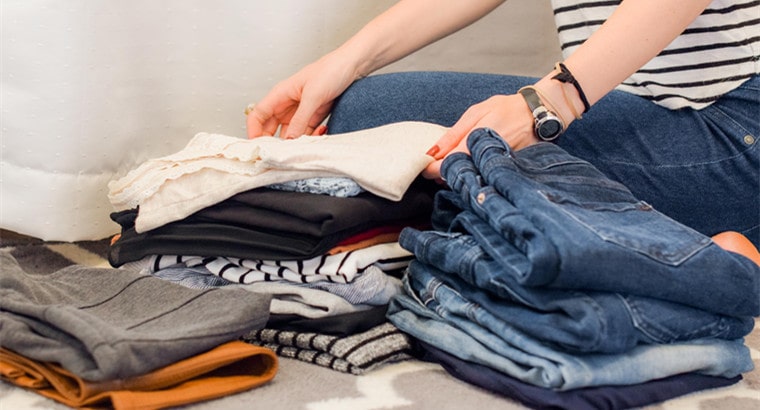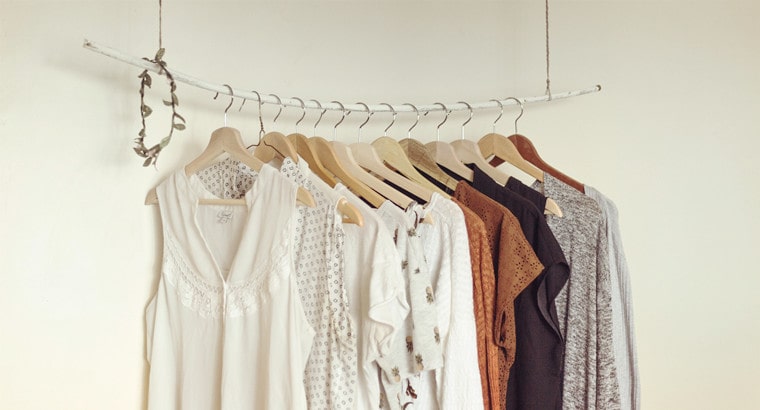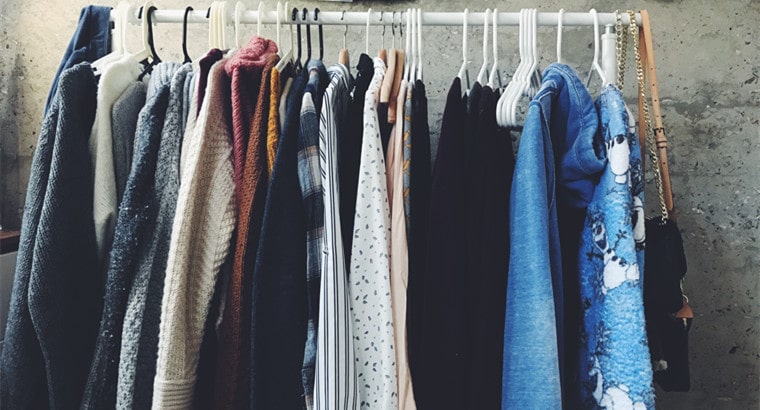If you’ve done laundry before, then you’ve probably experienced the problem of shrinking clothes. This can be a painful experience, especially when your favorite designer clothes have shrunk.
But even if your clothes have never shrunk after laundry, you still need to know how to prevent them from shrinking because you cannot predict when it will happen. It will be better if you can read the laundry labels before doing the laundry. This article gives you quick tips on how to prevent clothes from shrinking.
What Is Shrinkage of Clothes?

Shrinkage of clothes is the change in the dimensions of the fabric. However, this change in dimension can be both negative and positive. For instance, the size of your clothes can either increase or decrease, depending on the kind of shrinkage that happens and the type of materials they are made from.
Also, even though the thickness of a garment might change over time, it doesn’t affect the fit of the garment. On the other hand, shrinkage of a garment (whether an increase or decrease in length and width) affects the fit of the garment.
It can also be responsible for things like wrinkling seams, distortion of decorative stitching, and torque (pulling or hanging) of the fabric.
What Causes Clothing to Shrink?

There is no worse feeling than when you pull your favorite sweater from the dryer only to discover that it has contracted. When this happens, the first thing that comes to mind is to assume that your dryer has a problem. While the appliance may be to blame, there are many other reasons why your clothes shrink after laundry.
1. Felting Shrinkage
Felting happens when your clothes that are made from animal fibers such as wool and mohair come into contact with moisture and extreme heat. These materials contain microscopic scales along their surfaces that can compress or mesh together. This compression is the cause of shrinking.
That’s why you will notice that your favorite woolen sweater shrinks when you wash and dry it in the dryer. Unfortunately, this kind of shrinkage continues a little more every time you wash it.
2. Relaxation Shrinkage
This type of shrinkage occurs when your clothes that are made from an absorbent material such as cotton, silk, and linen, or a fabric altered to be an absorbent such as a synthetic performance fiber comes into contact with excessive moisture.
When this fabric is exposed to moisture, it will soak it all up and swell, causing the entire garment to shrink when it dries up. Thankfully, this type of shrinkage only affects less than 1 percent of the size of the whole garment and therefore it won’t have any significant influence on your clothes’ fit.
3. Consolidation Shrinkage
Consolidation shrinkage is the most common cause of shrinkage of clothes. It happens when you expose your clothes to a combination of moisture, heat, and mechanical action, such as the distress that occurs in the course of washing and drying cycles.
This combination causes the fibers in your garments to release any tension created by the manufacturer of the garment.
When this useful tension is released, it causes the fibers to relax, causing them to return to their natural size, which is often smaller. This kind of shrinkage is quite dramatic and often happens when you wash a garment for the first time. Unfortunately, it can drastically reduce the size of your clothing.
What Clothing Material Shrinks the Most?

Although most fabrics are treated to prevent them from shrinking, most of them will shrink over time due to one or all of the factors mentioned above. However, some fabrics are more susceptible to shrinking than others.
Natural fabrics are more prone to shrinking than synthetic fabrics. Here are some of the fabrics that shrink the most.
1. Cotton
Any garment that is made from 100 percent natural cotton is highly sensitive to heat. Therefore, it will shrink when it is exposed to excess heat, especially when put in a hot dryer. Again, cotton stretches easily, so any warmth will reshape your cotton garment.
2. Wool
All wool garments, except for the “superwash” woolen fabrics that are used for socks, shrink when exposed to hot water. Also, the agitation caused by a washing machine causes the wool fibers to mat together. Therefore, it is not a surprise to find your hot dryer transforming your XL sweater into a solid, dense, doll-sized costume.
3. Silk
Any garment made from pure silk is very delicate and can easily be damaged by the washing machine and the hot temperatures inside a dryer. Like wool, silk is made from protein fibers that shrink when exposed to heat.
It is also important to note that different types of silk have varying texture, which ranges from smooth or nubby raw to shiny, woven dupioni. All these textures react differently when exposed to heat and agitation in the washing machine.
4. Linen
Linen is made from flax fibers and comes in different weights. It can also be mixed with cotton and rayon. Although linen is made more pliable by washing, it shrinks and wrinkles very easily when it’s exposed to heat and laundry cycles.
How to Prevent Clothing from Shrinking?

Since it’s almost impossible to avoid clothes made from materials that are highly susceptible to shrinking, the only solution is to learn how to prevent this problem. Here are some quick tips on how to prevent your clothes from shrinking.
1. Follow the Manufacturer’s Instructions
No matter how boring and unnecessary the manufacturer’s instructions on the garment’s label may seem, make sure you follow them strictly. Most reputable garment manufacturers will always put a laundry symbol on their garments to guide you when washing them. Ignore these instructions at your own risk.
2. Wash with Cold Water
Coldwater has been found to help prevent clothes from fading. In addition, it has proved to be very effective in preventing shrinkage problems. Cool temperatures don’t compromise the bond between your garment’s threads.
3. Choose Air Fluff or Tumble Settings
Unlike in the past, most of the latest washing and drying machines have various settings designed to make their usage more convenient and safer. For instance, you will find a dryer with 12 dry cycles designed to allow you to customize the settings such as dryer temperatures and speed. Choose a dryer with the Tumble, Spin, or Air Fluff setting because it uses motion to dry clothes instead of heat.
4. Don’t Over-Dry Your Clothes
If your dryer is not automatic, make sure you dry your clothes in short intervals so that they do not overdry. The good thing is that you can now find an affordable automatic dryer that will shut off automatically when your clothes are dry.
5. Choose the Lowest Heat Settings
Since not every dryer has the Tumble or Air Fluff setting, you should choose the lowest settings when drying your clothes. You just need to turn the temperature knob down to “low heat” or choose the “delicate” option.
6. Upgrade Your Washer and Dryer
If you have tried all of the above tips and none of them is working, consider upgrading your washing machine and dryer. Most traditional washers and dryers weren’t designed for the latest fabrics and therefore they are likely to ruin them. The best solution, in this case, is to upgrade your appliances.
Can You Fix Shrunken Clothes?
Unfortunately, you cannot unshrink your shrunken clothes, but you can relax and straighten their fibers back to their original shape. For most natural and synthetic fabrics, this is very easy to achieve with water and baby shampoo. Some people use vinegar or borax to straighten wool and cashmere.
Just soak the shrunken clothes with lukewarm water and add one or two tablespoons of baby shampoo or conditioner to the water. Ensure the clothes are completely immersed in the water and let them remain in the water for about 30 minutes. Then, squeeze the clothes to wring out the excess water, but don’t rinse off the baby shampoo yet.
Roll up each piece of cloth inside a large dry towel and leave it in there for about 10 minutes. Uncover the cloth and stretch it by hand to reshape it. If you want to stretch your shrunken pair of jeans, you can do so by immersing it in warm water.
In Summary
Although it is impossible to return your shrunken clothes to their original sizes, these tips should help you to prevent your clothes from shrinking in the first place. And if they shrink by accident, you can straighten them up and restore their original shape.
The most important thing is to understand the types of fabrics your clothes are made from and how they react to different washing and drying conditions. That way, you can know how to prevent clothes from shrinking.










